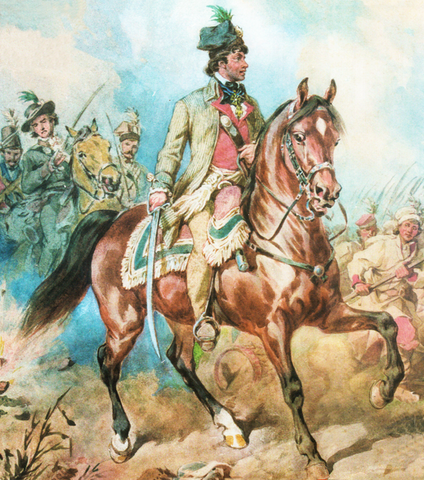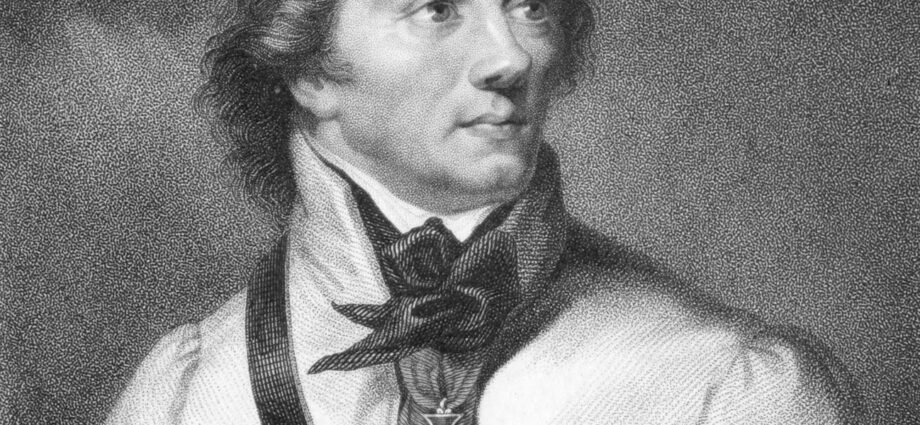Contents
😉 Greetings to regular and new readers! Thank you for choosing the article “Tadeusz Kosciuszko: Biography of the National Hero of Poland and the USA” on this site!
The article tells about a military and political leader of the Polish-Lithuanian Commonwealth and the United States, a participant in the US War of Independence, the leader of the Polish uprising of 1794, a national hero of Poland and the United States, an honorary citizen of France, generalissimo of the army of the Polish-Lithuanian Commonwealth.
Information on the topic “Tadeusz Kosciuszko: biography” will be of interest to history buffs, students and schoolchildren.
Biography of Tadeusz Kosciuszko
He was born in 1746 on the family estate of the Grand Duchy of Lithuania (now the territory of Belarus). The family of the small-scale gentry Ludwik Kosciuszko had four children: two daughters and two sons.
Childhood and youth
In 1755, the parents assigned the boys to the school of the Order of Piarists in the town of Lyubeshov, where they studied for five years.
Little is known about Tadeusz’s life after school. After the sudden death of Ludwik in 1758, the family’s financial situation deteriorated sharply. From 1765 to 1769, the young man studied at the Knights’ School, which was created in Warsaw by Stanislav Poniatowski.
The school could rightfully be called a military academy, since it trained officers. In addition to special subjects, cadets studied history, mathematics, philosophy, law and four foreign languages.
Among his students, Tadeusz stood out for his modesty and determination. He reminded his classmates of Charles XII and they called him “Swede”. He was respected by both students and teachers.
In 1768, a civil war begins in the Polish-Lithuanian Commonwealth. Tadeusz’s relatives were on opposite sides of the barricades. For example, his brother Józef ended up in a rebel camp, and his patrons Czartoryski were in favor of the Russian protectorate.
Military art and painting
Tadeusz did not want to make a choice and in 1769, together with his friend Orlovsky, left for the Paris military academy. However, it turned out that foreigners are not admitted to this educational institution. In order not to waste time, friends entered the Academy of Painting and Sculpture. Kosciuszko also studied architecture.
Tadeusz strove to increase his knowledge of the art of war, he became a volunteer at the lectures. For five years he was a regular visitor to the library of the military academy, although he continued to study painting.
Kosciuszko was influenced by the ideas of Voltaire, Montesquieu and Rousseau. These ideas were supplemented by memories of the tolerance that prevailed earlier in the Commonwealth, which ultimately influenced the young man’s worldview.
A teacher in love
During the division of the country in 1772, Russia, Prussia and Austria forcibly took part of its territory, increasing their influence.
In 1774 Tadeusz returned home. Jozef, having received the inheritance, spent not only his share, but also his brother’s share. Tadeusz got a job as a teacher for the children of the tycoon Józef Sosnowski.
He fell in love with Sosnovsky’s eldest daughter and organized an escape. But the lovers could not run far. The recalcitrant daughter was returned to the family and married to Jozef Lubomirsky.
In the fall of 1775, a family council was held, where the brothers’ debts were clarified and Tadeusz transferred the right to his part of the estate to his sister Anna. Her husband, Piotr Estko, was appointed as the manager, who pledged to pay off Tadeusz’s debts. Having resolved financial issues, Kosciuszko decided to leave the country again.
Military career
Tadeusz applied for his enlistment in the army of Saxony, but he was refused.
Soon he goes to Paris, where he learns about the uprising of the American colonies against Britain and their selfless struggle. The success of the first battles received a great response in France. In the summer of 1776, 30-year-old Kosciuszko went overseas and took an active part in these events.
As a talented engineer, he prepares blueprints and supervises the construction of fortifications. Under his direct leadership, a fort was built at West Point. His knowledge and talent was noted by George Washington.
In Philadelphia, his plans to fortify Cape Billing and the port were appreciated by the Americans. At first, Tadeusz was a volunteer for B. Franklin, but soon Congress, taking into account his engineering merits, appointed him colonel.
In 1777 he served in the troops of the general. G. Gates, stationed at the border with Canada in the fortress of Ticonderoga. Kosciuszko took an active part in its defense. The British controlled the highlands, and the situation for the Americans was hopeless, so they surrendered the fortress.
A talented commander
The British began pursuing the exhausted soldiers. Gene. Philip Schuyler desperately tried to break away from the pursuit and asked the commander to stop the enemy army in any way.

Portrait of Tadeusz Kosciuszko
The soldiers, under the leadership of Tadeusz, exhausted from fatigue, began to fell trees, destroying bridges. This restrained the pressure of the British and the Americans were able to cross the Hudson River.
Then, by order of Gates, the commander carefully examines the surrounding area and chooses a convenient position near Saratoga. He uses natural barriers and erects fortifications impregnable from all sides.
In two battles near Saratoga, Gates’s army not only withstood the enemy’s pressure, but went on the offensive, and then surrounded the British. On October 13, Bergoyne surrendered, and 4 days later its 600th corps. The remains moved away from the fortress in the direction of Quebec. This battle became a turning point in the war.
In the spring of 1778, Tadeusz arrived at West Point, where he fortified the fortifications for two years. He, with his inherent talent, took advantage of the hilly terrain.
In the fall of 1780, Tadeusz is already in North Carolina at the disposal of the general. Nathaniel Green. Here he took part in the construction of punt boats, set up camps, surveyed the crossings, went on reconnaissance.
When gene. Cornwallis pursued Green for 320 km through the wilderness in early 1781, the Americans crossing the streams with ease. There were no boats in the British army, they could not cross the wide enough river Dunn.
The last battle involving Kosciuszko was at James Island in South Carolina in November 1782. In April 1783, he prepared fireworks on behalf of the US Congress to celebrate the signing of the Treaty of Paris. The celebration took place on July 4th in Princeton. Tadeusz received citizenship. In July 1784 he left for his homeland.
Military service in the Polish army
In the spring of 1790, Tadeusz began military service in the Polish army with the rank of major general. In May 1792, the magnates created the Targovitsky Confederation and wrote an appeal to Catherine II, where they asked for help. A few days later, the Russian army entered the territory of the Commonwealth, and the war began.

Kosciusko, painting by Julius Kossak
The Russian army had three times as many soldiers as the Polish army. The Russians crossed the border into the Ukraine, where the troops of Kosciuszko and Poniatowski were stationed. The Poles were forced to retreat, and only in the middle of the summer did Kosciuszko’s division enter the battle near the city of Vladimir-Volynsky.
In the battle of Dubenka, his division fought desperately against five times the superior forces of the enemy. Under his command there were 5 people, but he forced the general. M. Kakhovsky with an army of 300 people. take battle on a small area in the middle of the swamps.
For five hours the division held back the enemy, making it possible for Poniatovsky’s detachments to move away from the Bug. Only after losing all the fortifications did the division retreat. Tadeusz was named one of the most talented military leaders.
Honorary Citizen of France
After this battle, the king awarded the commander with the Order of the White Eagle, and France granted him honorary citizenship. But in July, the king unexpectedly gave an order to end hostilities against Russia.
At the beginning of 1793, Prussia and Russia carried out a new partition of the Commonwealth, leaving it 200 thousand square meters. km. and 4 million inhabitants.
Kosciuszko organized and led the national liberation movement. But six months later, in the battle at Matseevice, the rebels were defeated. The seriously wounded commander was taken prisoner. Only after the death of Catherine II, Paul I, who ascended the throne, pardoned Tadeusz, who left for the United States.
In 1798 he returned to France, and from 1815 until the end of his life he lived in Switzerland. On October 15, 1817, Tadeusz Kosciuszko, a patriot of his homeland and fighter for freedom and independence, left this world at the age of 71.
Video
Don’t miss the video “Tadeusz Kosciuszko: biography”
😉 If you liked the article “Tadeusz Kosciuszko: biography”, share with your friends on social media. networks. Subscribe to the newsletter of new articles to your email. mail. Fill out the form above: name and e-mail.










